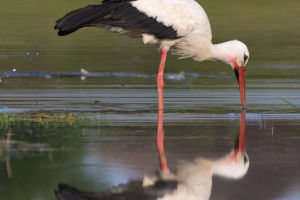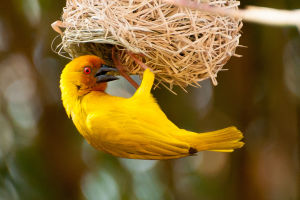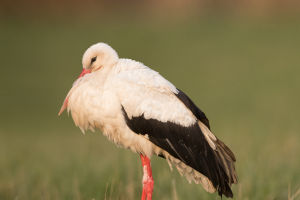Cats have always held a special place in human admiration, and their roars are often considered a symbol of untamed power and strength.
Yet, amidst the vast cat family, the snow leopard stands out with its distinctive howl, creating a stark contrast to the thunderous roars of its feline counterparts.
The question arises: Why can't snow leopards emit the mighty roars akin to lions and tigers, but instead, express themselves through haunting howls? What mysteries lie hidden within this unique vocal adaptation?
Evolution's Masterpiece: Feline Vocal Characteristics
In the feline world, growling is regarded as a specialized form of vocal expression, primarily rooted in the physiological structure of the larynx. Most prominent big cats, such as lions, tigers, leopards, and pumas, boast specialized larynx structures enabling them to produce resounding roars.
These roars not only assert territorial dominance but also resonate widely, signifying the presence of these majestic felines.
However, the snow leopard's throat structure diverges. While also belonging to the Leopard genus in the cat family, their throat anatomy isn't conducive to producing roars akin to their larger relatives.
Instead, snow leopards communicate through gentle, plaintive howls, rendering them a unique and mysterious species within the feline realm.
The Relationship between Ecological Adaptation and Vocal Expression
To fathom why snow leopards howl rather than roar, a deeper dive into their specific habitat is necessary. Snow leopards predominantly inhabit high-altitude areas like Central Asia and the Himalayas, dwelling in cold, rugged terrains.
In such an environment, the conventional roar may prove unsuitable for the snow leopard's survival strategy.
A skilled solitary hunter, the snow leopard's environment demands efficient prey capture while maintaining contact across vast territories. This necessitates a sound that can traverse extensive ranges and be comprehended by fellow snow leopards.
The frequency and propagation pattern of howls aligns better with high mountainous landscapes, making the snow leopard's howl an integral component of its survival strategy.
The Evolution and Unique Ecological Role of Sound
The distinctive howl of the snow leopard mirrors the evolving balance within the ecosystem. In the harsh, cold environment of high altitudes, this unique vocal expression becomes a survival strategy.
The soft howls convey information without overly disclosing the snow leopard's location, aiding in more effective hunting and territory protection. Furthermore, the snow leopard's ecological role dictates its relatively solitary lifestyle. In contrast to larger cats emitting thunderous roars, the snow leopard's howl aligns with its independent nature, adapting to the living conditions in alpine mountainous regions.
Scientific Exploration and Conservation Challenges
While we grasp some understanding of why snow leopards howl, scientists continue the quest for deeper insights. Understanding the evolutionary and ecological processes behind feline sounds not only enriches biological research but also deepens our comprehension of snow leopard conservation.
Snow leopards confront numerous survival challenges, including habitat loss, hunting, and climate change.
A profound understanding of their vocal expressions could pave the way for more effective conservation strategies, ensuring that these rare creatures continue to howl alone in high mountain areas, contributing uniquely to the harmony of nature.
The howl of the snow leopard emerges as a moving symphony in nature—a captivating melody in the grand history of evolution. Behind this unique sound lies a narrative of evolution and a delicate balance in the ecosystem.
Faced with mounting survival pressures, our responsibility is clear: to safeguard this unique and mysterious species, ensuring their howls echo in alpine environments for generations to come.
This endeavor calls for collaboration among scientists, conservationists, and the global community to provide snow leopards with a safe and sustainable home.


